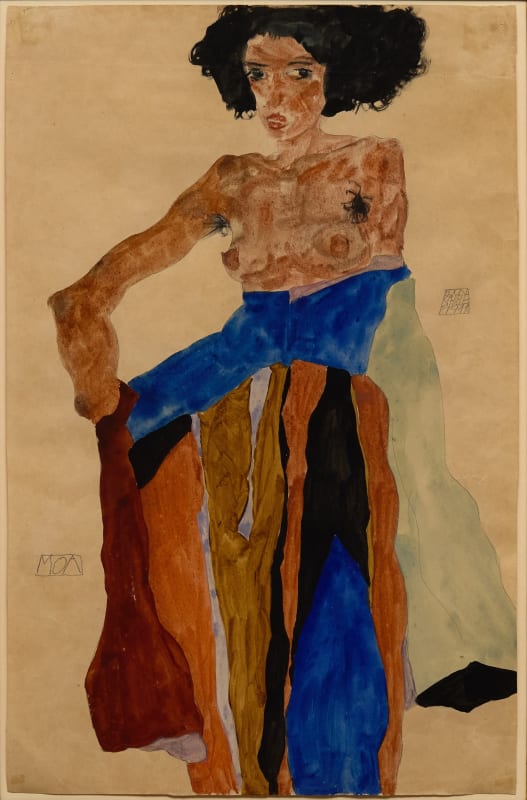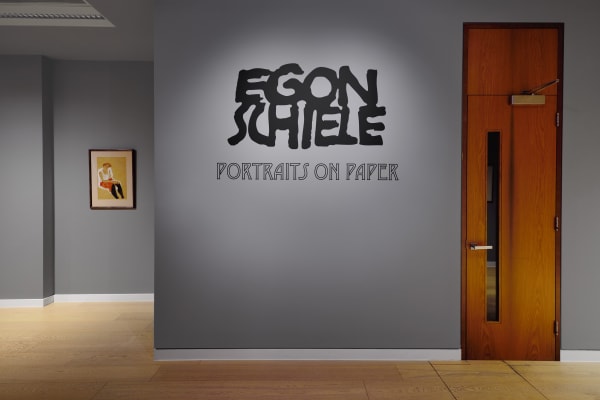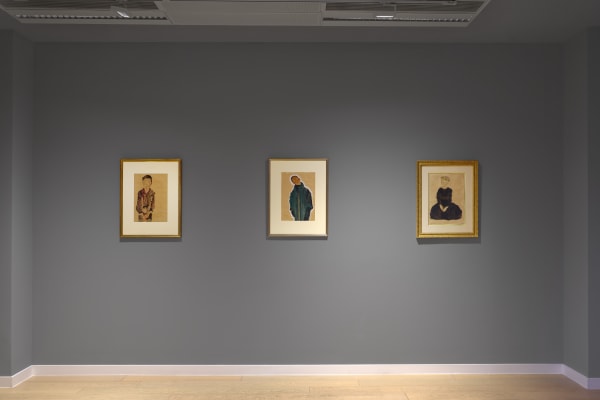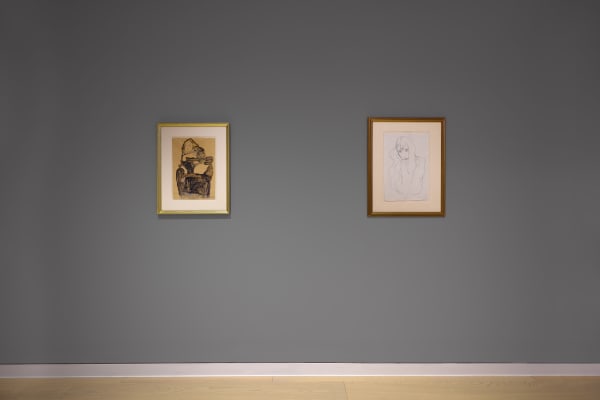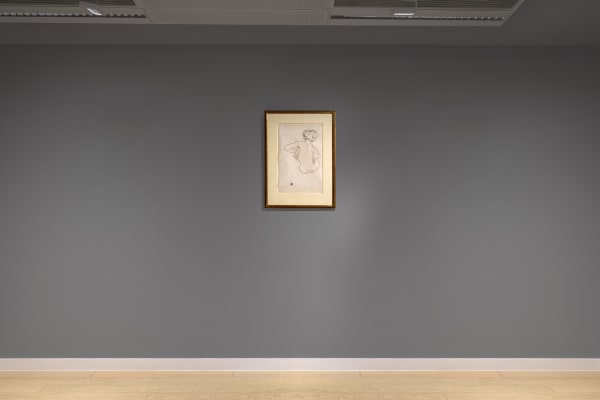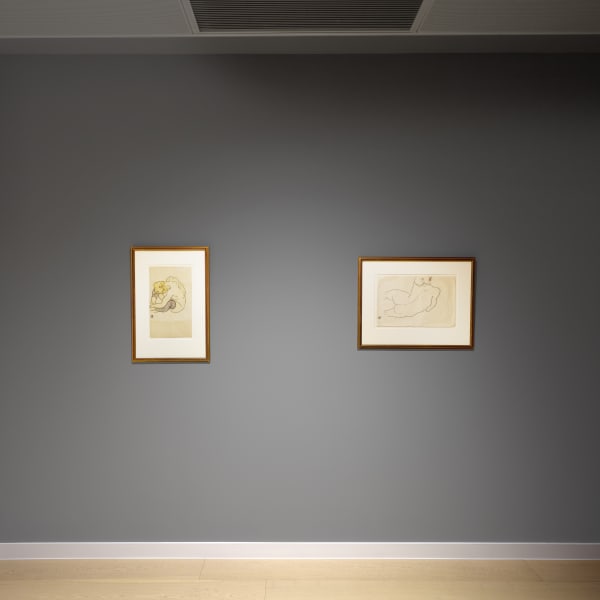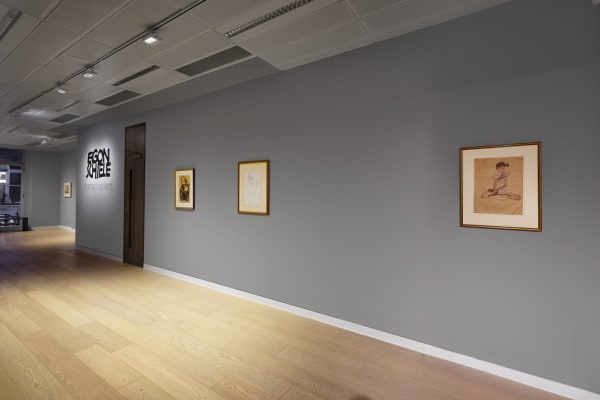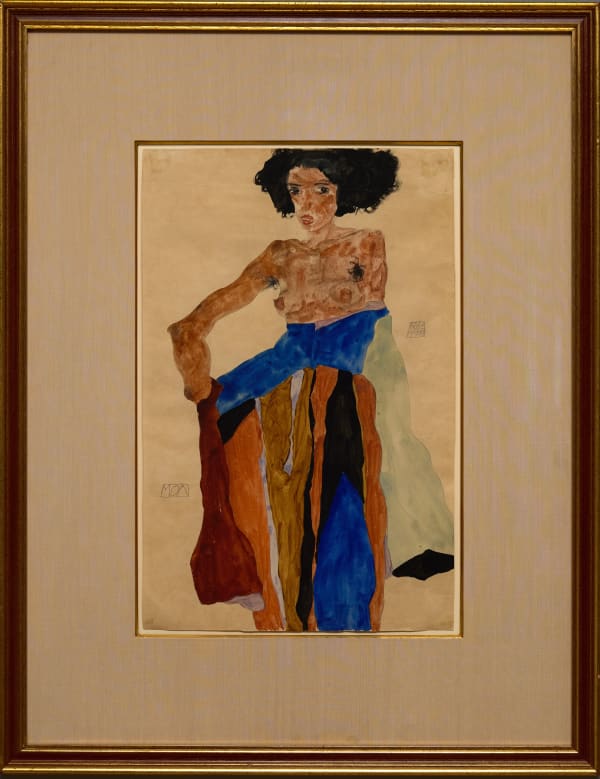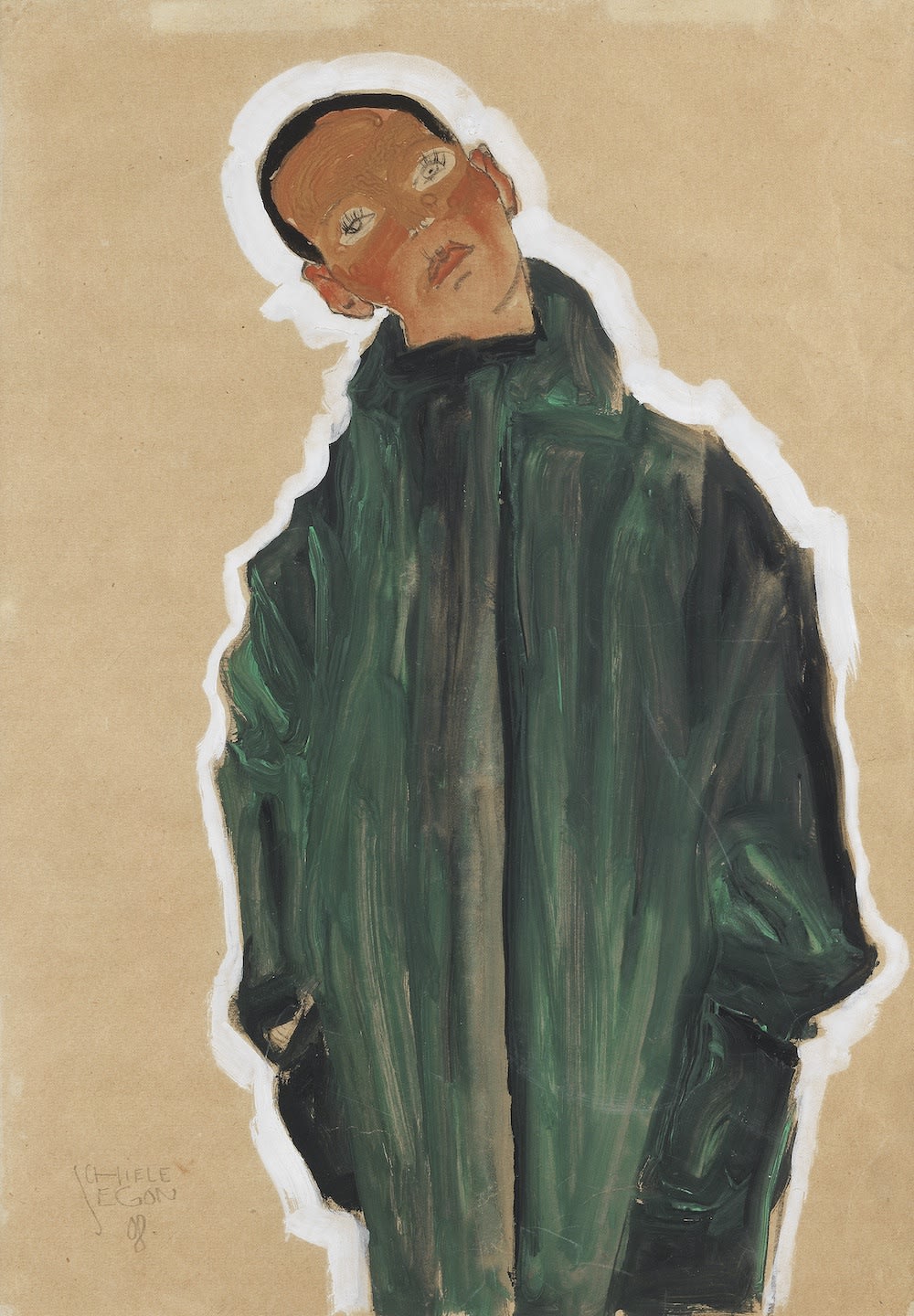Egon Schiele: Portraits on Paper
Omer Tiroche Gallery is pleased to announce our exhibition Egon Schiele: Portraits on Paper. This important body of work brings together pieces from two of the most significant periods of Schiele’s life: spanning from 1910 until the end of his life in 1918. The featured works, all portraits on paper—considered by many to be of equal, if not greater, importance than his paintings—showcase Schiele’s remarkable ability to capture and explore the raw emotion and vulnerability of his subjects, pushing the boundaries of modern portraiture with unparalleled intensity and insight.
Schiele was born in 1890 in Tulln, Austria, during a time of profound cultural and intellectual tumult in Vienna. His early life was defined by his parents’ turbulent marriage; his father, Adolf, strict and ailing from syphilis, fostered a morbid atmosphere, while his mother, Marie, offered distant support. These dynamics profoundly influenced Schiele’s psyche, later reflected in his poignant depictions of the human figure. These early experiences, combined with Vienna’s vibrant cultural milieu shaped by thinkers like Friedrich Nietzsche and Sigmund Freud, laid the foundation for Schiele’s radical artistic practice.
The years 1910 and 1911 marked a transformative period in Schiele’s career, widely considered his artistic breakthrough. His departure from the Akademie der Bildenden Künste in 1909 cost him his uncle’s financial support but liberated him artistically. Freed from academic constraints, Schiele began developing his distinctive style, initially influenced by his mentor, Gustav Klimt, but quickly evolving into something uniquely his own.
Schiele transformed the human body into a profound expression of psychological states. His portraits were provocative, erotic, somewhat grotesque, and at times bordering on the pornographic. He amplified physical features, elongated limbs and emaciated torsos to convey emotional intensity and inner turmoil, while grappling with the tension between sexuality and death. His colour palette, dominated by muted earth tones, blood reds, and stark whites, emphasised fragility and psychological unease. The sparse, abstract backgrounds underscored themes of isolation and existential loneliness. So controversial and confrontational were his portraits that in 1912 Schiele was imprisoned for immorality and his judge publicly burnt one of his works during his sentencing.
His subjects often came from the fringes of society—prostitutes or child vagabonds who loitered around his Vienna studio, as seen in Junge im Grünen Mantel (Boy in Green Coat), 1910. Schiele’s female figures, often depicted with direct, penetrating gazes, challenged traditional portrayals of passive femininity. This defiance is seen in Moa, 1911, a striking portrait of his friend and cabaret dancer, Moa Mandu. Swathes of ultramarine-blue, fiery rusts, and vivid oranges envelop Moa, while the precise, elegant lines that define her figure reflect Schiele’s stylistic evolution under Klimt’s influence. This was the only model in Schiele’s oeuvre who had the privilege of having her name inscribed on his portraits of her.
In contrast to his earlier years, by 1918 Schiele had emerged as Austria’s leading artist following Klimt’s death. His career was soaring, marked by major exhibitions and critical acclaim. That year, he was preparing for the Secession’s 49th exhibition, where he was celebrated as the face of Austria’s new artistic generation. His wife, Edith, was six months pregnant, and Schiele’s life seemed poised for even greater success. However, the Spanish flu pandemic swept through Vienna, claiming Edith’s life and their unborn child. Schiele himself succumbed to the illness three days later, leaving behind a body of work that, though tragically cut short, remains a profound and timeless testament to his genius.
-
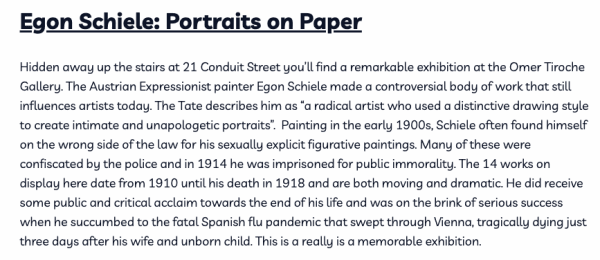
Don’t miss in April | Egon Schiele: Portraits on Paper
ArtsHub UK's monthly round-up of arts and cultural sector highlightsDr Diana Carroll, ArtsHub UK, April 1, 2025 -
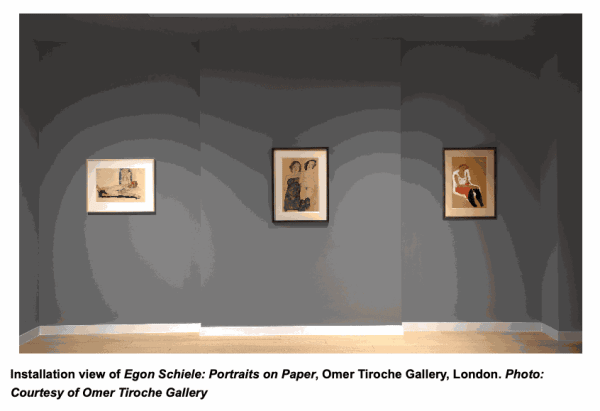
Gallery Hopping with Julie
Egon Schiele: Portraits on Paper, at Omer Tiroche GalleryJulie Brener Davich, Puck: Wall Power, March 25, 2025 -
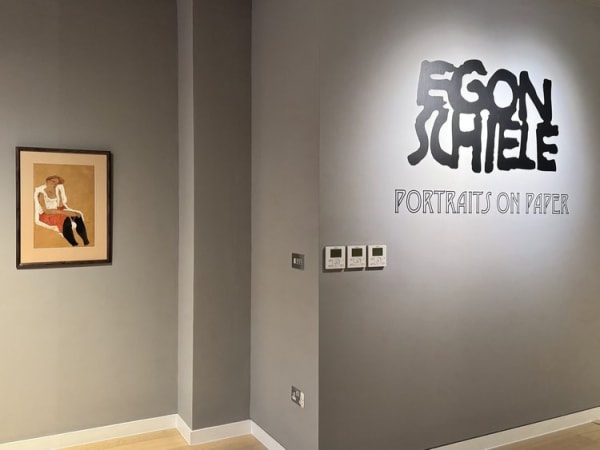
London Art Roundup
Issue 140February 17, 2025
